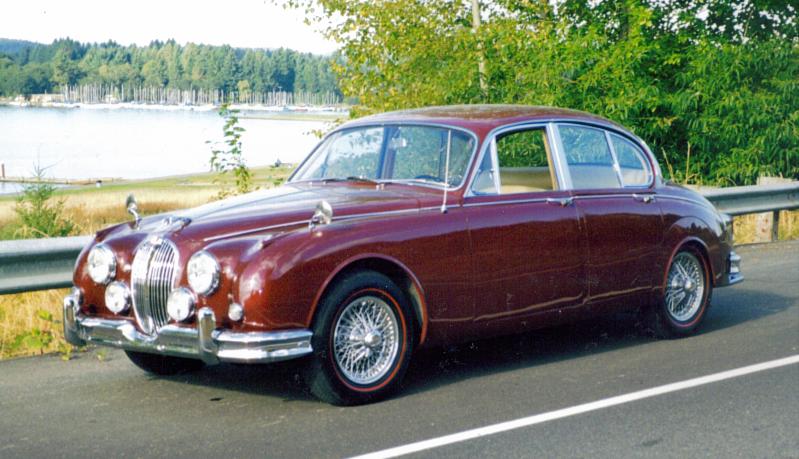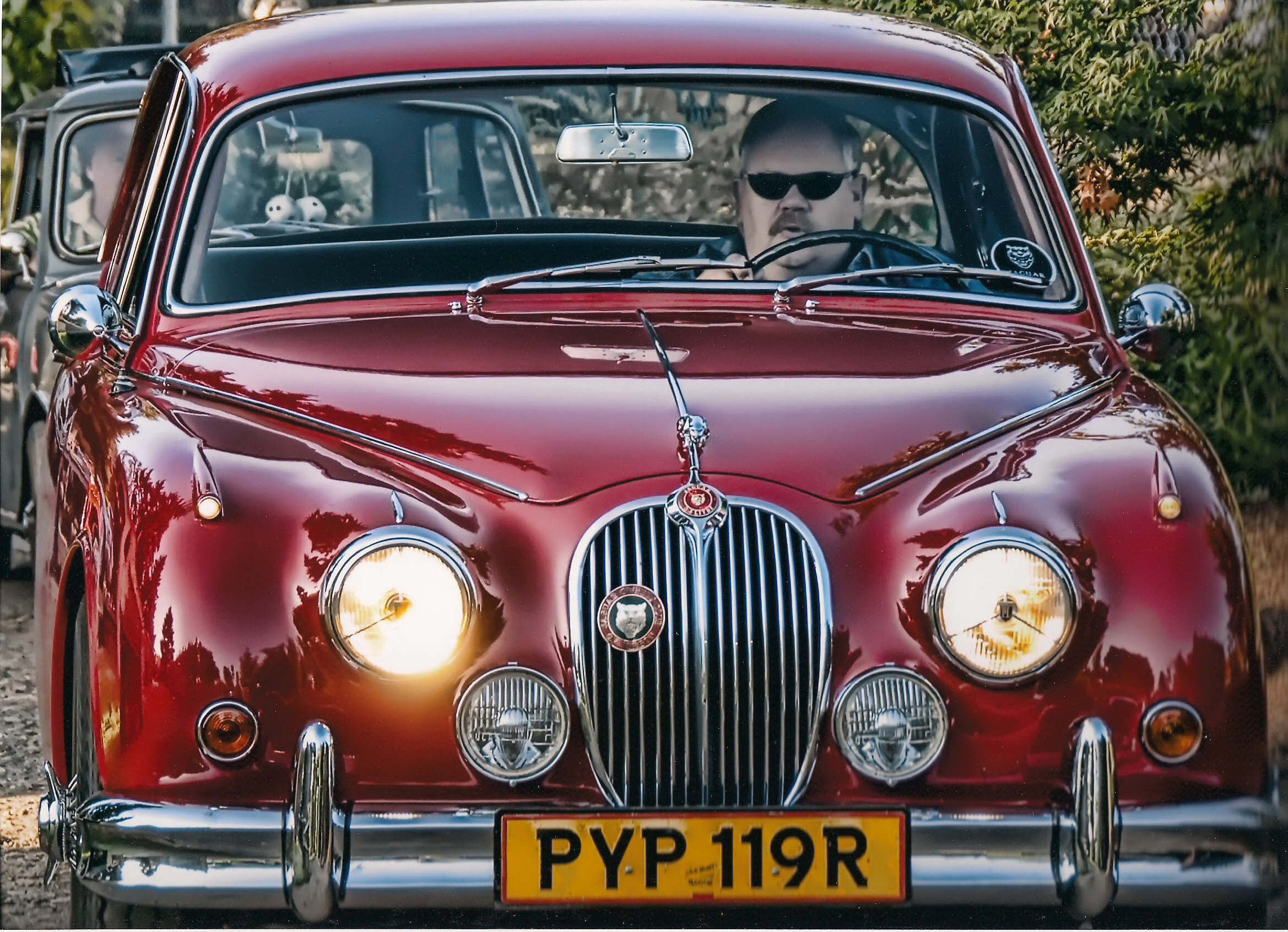| 1959-67 Mk2 3.8: This Opalescent Metallic Blue is an actual Jaguar color and is stunning on the real car too! Model by CORGI 1/43 |
1959-67 Mk2 3.8: The best color on a Mk2 is Carmine Red, but then I am biased see why by Clicking here Model by CORGI 1/43 |
1959-67 Mk2 2.4: I picked up this plastic kit already built from a seller in England that claimed it has been improved by the individual wire wheels and lens on the lights, detailed interior. I have never seen a kit in this scale of the Mk2 by Revell (Cadet - UK), but it is similar to kits of other cars from the earlt 60's, fairly inexpensive when new, multi-piece bodies, no chrome parts, etc. This is a nice little gem! Model by REVELL 1/40 |
1959-67 Mk2 3.8: By the mid-60's, the Mk2 and previous Mk1 had been in existence with its 50's styling for ten years. While still highly sought out as the "businessman's express" the Mk2 was beginning to lose sales to its stable mates the more modern S-Type and larger sedan the Mk X, as well as offerings from other European rivals. Had to imagine today, but within a couple years, Jaguar would find any buyers for the Mk2 Model by BOX 1/43 |
 |
 |
||
| 1959-67 Mk2 |
1959-67 Mk2: A rare Webasto sunroof car. Model by SMTS 1/43 |
The OIR 1960 Mk2 3.8 Model by SMTS 1/43 |
Behind the wheel of the OIR 1967 Mk2 3.4 |
| 1959-1967 Mk2 3.4: Model by VITESSE 1/43 |
1959-1967 Mk2 3.4: Model by VITESSE 1/43 |
| 1962 Mk2 County Estate: Then & Now |
THE SIGNATURE PROJECT & RACING DIORAMAS
World F1 Champions 1950 - PRESENT
GREAT AUTOMOTIVE MAKES & RACING TEAMS:
AMERICAN:
CHAPARRAL
CHEVROLET & GM POWERED RACE CARS
COBRAS & DAYTONAS - SHELBY CARS
CUNNINGHAM EQUIPE - THE CARS OF BRIGGS CUNNINGHAM
FORD POWER: GT40's, MUSTANGS & MORE
MISC. AMERICAN MADE
BRITISH:
ASTON MARTIN RACE & PRODUCTION
AUSTIN HEALEY & HEALEY
BRABHAM F1 & SPORTS CARS
BRM F1 & SPORTS CARS
LOLA SPORTS RACING CARS
LOTUS F1, RACE & PRODUCTION
McLAREN RACING & PRODUCTION CARS
MG CARS - RACING & PRODUCTION
TRIUMPH RACE & PRODUCTION CARS
MISC. BRITISH MADE
FRENCH:
BUGATTI
FRENCH MADE
GERMAN & SWEDISH:
AUDI RACING
BMW RACE & PRODUCTION
MERCEDES BENZ RACE & PRODUCTION
MISC. GERMAN & SWEDISH MADE
ITALIAN & SPANISH:
ABARTH RACING
ALFA ROMEO RACE & PRODUCTION
LANCIA RACE & PRODUCTION
MASERATI RACE & PRODUCTION
MISC. ITALIAN & SPANISH MADE
ASIAN & AUSTRALIAN:
DATSUN/NISSAN RACING
TOYOTA RACE & PRODUCTION CARS
MISC. JAPAN, ASIAN & AUSTRALIAN MADE
VETERAN, CLASSIC & SPECIAL INTEREST CARS All MARQUES
LAND SPEED AND ENDURANCE RECORD CARS LE MANS THE PINACLE OF ENDURANCE RACES: HALL OF FAME DRIVER TRIBUTES: PLAY BALL! - IT'S BASEBALL TIME:
For copies of images, questions or comments about the collection to: OLD IRISH RACING
Back to: OLD IRISH RACING MODELS INDEX Home Page
Back to: OLD IRISH RACING Home Page Legal stuff: Content and images on this website unless stated, are the property and content of Old Irish Racing and may not be used without permission. Old Irish Racing is not affiliated with, or represent any other entity past or present.
PLEASE NOTE: From 1968 into the 1990's tobacco companies sponsored many significant race cars. We don't promote tobacco use, rather we stronly discourage it. However, we do promote historical accuracy, Old Irish Racing chooses
to display models in our collection as historically accurate as possible. While seeing a tobacco advert on a car gives me no more desire to go smoke than seeing a car makes me want to go
suck on its exhaust pipe. If tobacco (or alcohol) adverts on race cars offend you, please go look at nice pictures of bunnies and kittens on another site. Thank you!
THE 24 HOURS of LE MANS 100 YEARS - 1923-2023
THE OLD IRISH RACING HALL OF FAME
A TRIBUTE TO BOYHOOD HEROES AND MY DAD
All pages and content on this website (unless noted) are owned and the copyrighted and may not be reproduced or redistributed without the consent of Old Irish Racing. This is a private collection, unless noted, pieces are not for sale!